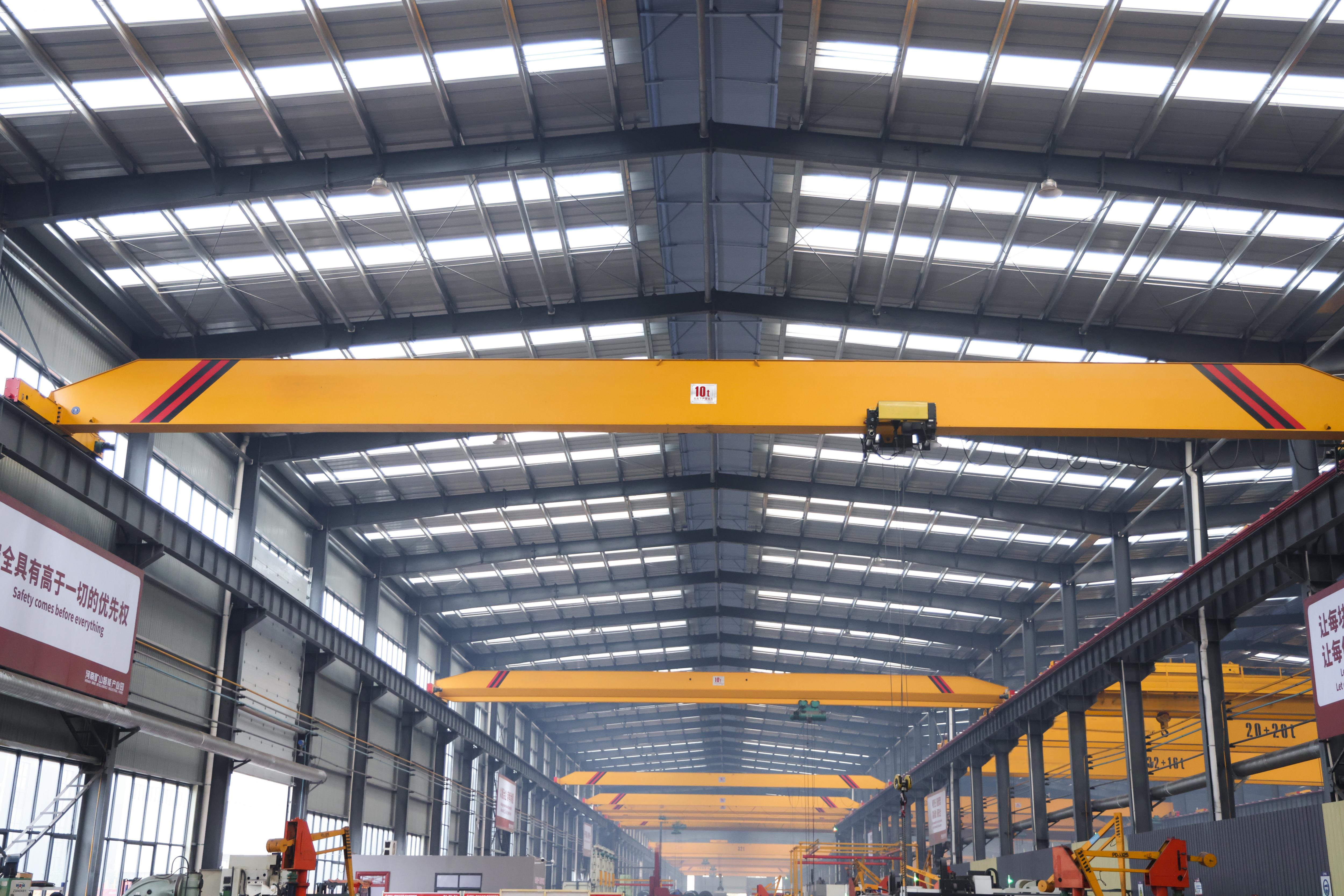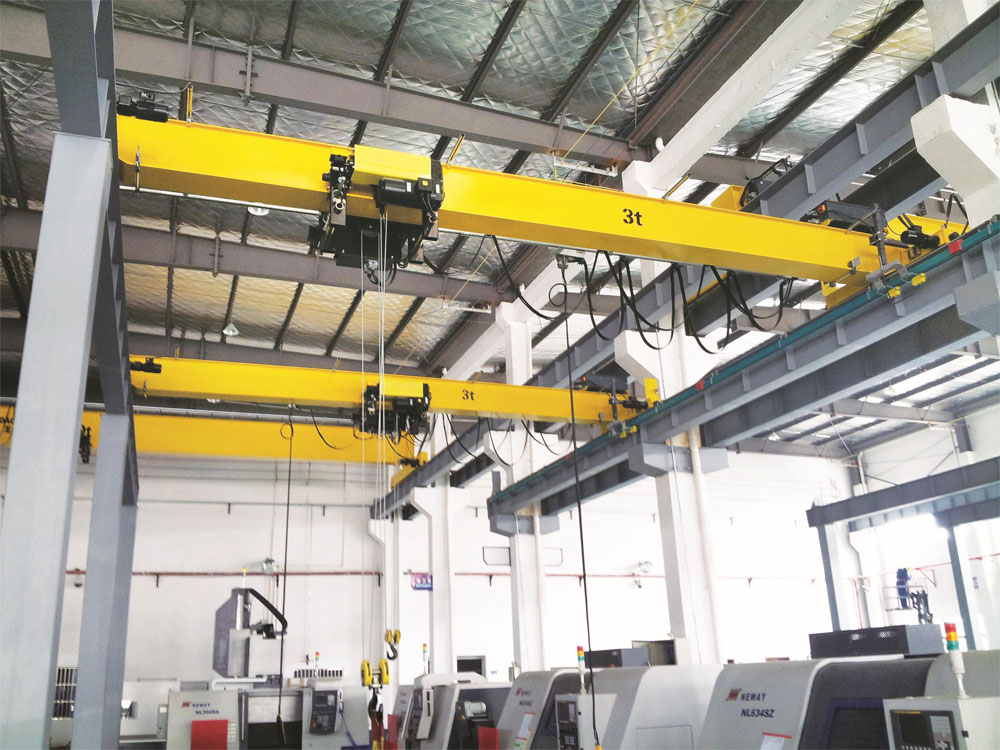Analysis and preventive measures of common mechanical failures of overhead cranes
1. Analysis of brake failures
The brake is an important safety component of a bridge crane. It has the functions of preventing suspended objects from falling and achieving parking. Only a good brake can guarantee the accuracy of crane operation and safe production.During crane operation, the brake may have mechanical failures such as insufficient braking force, sudden brake failure, excessive temperature of the brake wheel, smoking of the brake pad, and inability to open the brake arm. The causes of these mechanical failures are analyzed as follows:
The brake belt or brake wheel is worn too much; small pieces of the brake belt are partially detached; the main spring is adjusted too loose, and there is oil stain between the brake belt and the brake wheel,there are stuck places or parts with excessive wear outside the movable hinge, the locking nut is loose, the whole pull rod is loose, the impeller of the hydraulic push rod releaser is not flexible, the brake pad is seriously or large pieces fall off, or the long-stroke electromagnet is stuck, the main spring fails, or the main components of the brake are damaged. The gap between the brake and the gasket is adjusted too large or too small, the hinge is stuck or the braking torque is adjusted too large, or there is a lack of oil and air mixed in the hydraulic push rod release cylinder, or the grease used for the hydraulic push rod release does not meet the requirements, or there is dirt between the brake pad and the brake wheel.
2. Preventive measures
Regularly check and maintain the brakes. The brakes of the lifting mechanism must be checked once per shift, and the brakes of the operating mechanism must be checked once a day. The main inspections include: whether the hinges are stuck or worn, whether the fastening parts are loose, whether the movements of the moving parts are normal, whether the hydraulic system is normal, and whether the wear between the brake wheel and the brake belt is normal and clean. Determine whether the brakes are normal based on the inspection results, and resolutely prevent operation with defects. At the same time, the brakes must be lubricated and maintained regularly. In order to ensure the safe operation of the crane, the brakes must be adjusted frequently to ensure the working requirements of the corresponding mechanism.

2. Wheels and Tracks
Common failures of wheels and tracks during the operation of cranes are wheel gnawing, uneven height of trolleys, and slipping. There are many reasons for gnawing, and the forms of gnawing are various. Minor gnawing affects the life of the crane, and severe gnawing can cause serious casualties. Therefore, special equipment managers should pay enough attention to gnawing. The main reasons for gnawing are the uneven friction that does not meet the requirements during installation, excessive wear of parts in the trolley transmission system, and excessive key connection gap, which cause asynchronous braking. Therefore, the special equipment management departments of various units must find qualified units to install and repair cranes when installing and repairing them, so as to ensure the safety and operating life of the equipment; at the same time, special equipment managers should strengthen routine inspection and management to avoid mechanical failures of gnawing cranes. During the inspection process, they should carefully and meticulously find out the reasons for gnawing and take corresponding measures. The uneven height of the trolley wheels is an extremely unsafe factor in the operation of the crane. The uneven height of the trolley causes one wheel of the trolley to be suspended in the air or the wheel pressure is too small during operation, which may cause vibration of the trolley body. There are many reasons for the uneven height of the trolley wheels, but the main reason is that the installation error does not meet the requirements and the weight of the trolley design itself is uneven. Therefore, the fault of uneven height of the trolley should be analyzed comprehensively to solve the problem of uneven height of the trolley.
During the operation of the crane, the trolley will slip due to unclean tracks, excessive start-up, uneven trolley tracks, elliptical wheels, and uneven wheel pressure between the driving wheels. This requires special equipment management personnel to be careful during the inspection process and solve problems in time to avoid the phenomenon of trolley slipping.

3.Reel
The drum is an important load-bearing component of the crane. During use, the drum wall may become thinner, holes may appear, and the drum may break. The cause of these failures is the contact and friction between the drum and the wire rope. When the drum thins to a certain extent, it will break due to the pressure exerted by the wire rope. In order to prevent the occurrence of such mechanical accidents, according to national standards, the drum wall should be replaced in time when the wear reaches 20% of the original or cracks appear. At the same time, attention should be paid to the operating environment and the lubrication of the drum and wire rope.
Drum inspection, maintenance and related requirements: Drum rope groove, drum surface, drum shaft, assembly and installation, rope groove wear more than 2mm should be re-machined, rope groove after overhaul should meet the drawing requirements, but the drum wall thickness should not be less than 81% of the original thickness, drum surface should not have cracks, should not have obvious out-of-roundness, pressure plate screws should not be loose, there should be no cracks on the drum shaft, after overhaul should meet the drawing requirements, wear more than 5% of the nominal diameter, should be replaced with new parts, the drum shaft centerline and trolley frame support surface to be parallel, the deviation should not be greater than 1mm/m, the drum installation The deviation of the center lines of the two shaft ends should not be greater than 0.15mm single-beam overhead crane.

